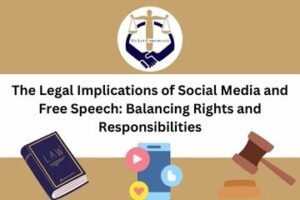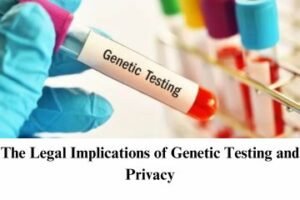Evidence Act 1872
Topics Covered:
Q. “Evidence may be given of facts in issue and relevant facts.” Explain.
Q. What do you understand by the relevancy of facts?
Q. Explain the doctrine of Res Gestae. Do you agree with the view that this doctrine is not only useless but also harmful? / When does the relevancy of facts form part of the same transaction?
Q. “Evidence may be given of facts in issue and relevant facts.” Explain.
To ensure that a judicial process does not linger on for too long, courts cannot waste their time on things that are not important to the case. While there can be many things for which evidence can be given evidence that does not bear on the case at hand, and has no use for the court. This is the concept behind Section 5 of the Indian Evidence Act, 1872, which says that in any suit or proceeding, evidence may be given of the existence or non-existence of every fact in issue and of such other facts as are hereinafter declared to be relevant, and of no others. A person is not allowed to bring forward any evidence to prove or disprove a fact that is neither a fact in the issue nor a fact that is relevant to the facts in the issue. This statement refers to two kinds of facts – facts in issue and relevant facts. Let us see what they both mean
Facts in Issue
Section 3 defines facts in the issue. According to this section, a fact in issue is a fact that directly or indirectly in connection with other facts, determines the existence, non-existence, nature, or extent of any right or liability that is asserted or denied in any suit or proceeding. In other words, facts in contention in a case are facts in an issue. For example, A is accused of murder, or B. In this case, the following are facts in issue –
- A caused B’s death.
- A had intention to kill B.
- A was insane.
- A received grave and sudden provocation from B.
All the above are facts in issue because they are in contention and they determine the liability of A. Their truth increases or decreases the probability that A murdered B. Prosecution will have to establish the facts that prove that A murdered B before A can be convicted. At the same time, the prosecution also has to disprove that any of the exceptions do not apply to A. A fact in issue is also known by its Latin term – factum proband, which means fact to be proved.
A fact will be considered as a fact in issue only if the fact is such that by itself or in connection to other facts it is crucial to the question of a right or liability. To be a fact in issue, a fact must satisfy two requirements – the fact must be in dispute between the parties and the fact must touch the question of right or liability. The extent of rights and liabilities of parties depend on the ingredients of an offense. In criminal matters, the allegations in the charge sheet constitute the facts in issue, while in a civil case, it depends on the provisions of the substantive law.
Relevant Facts
The word relevancy as such is not defined in the Indian Evidence Act, 1872, however, the meaning of the word is quite clear. The word “relevancy” means the property of a thing that makes it connected to the matter at hand. A thing is relevant to other when it has a relation to the other thing that tells something appropriate about the other thing. Relevancy of a Fact means that the fact has a significant relation to another fact that is under consideration. When two facts have a direct relation, they are relevant to each other. For relevancy, it is necessary that if we take one fact, the other will be relevant only if there is a certain type of relationship between them, which is pertinent in the given circumstances.
A relevant fact is also known by its Latin term – factum probans, which means a fact that proves. Thus, if facts-in-issue are the facts to be proved or disproved in a trial, relevant facts are the facts that help prove or disprove facts-in-issue. A fact is relevant if belief in that fact helps the conclusion of the existence or non-existence of another.
Section 3 specifies that a Relevant fact is a fact that is relevant to another when it is connected to the other in any of the ways referred to in the provisions contained in the act. Sections 6 to 55 contain provisions that define the relationships that make a fact legally relevant or not relevant to another. The relationship makes one fact more probable or improbable because of the other. For example, Fact A is that a person was given a certain medication and died. Fact B is that the person was suffering from TB. Here, fact B is relevant to the fact A because it throws light on the possible causes of his death. Fact B makes it probable that he might have died because of TB instead of the given medication.
In DPP vs Kilbourne, 1973, Lord Simon of Glaisdale said, “Evidence is relevant if it is logically probative or disprobative of some matter which requires proof. Relevant evidence is evidence that makes the matter which requires proof more or less probable.”
As is evident from Section 5 stated above, only those facts that are related to the facts in the issue through relationships defined in Sections 6 to 55 are legally relevant and evidence can be given only for those facts in a trial. It must be noted, however, that a relevant fact may not necessarily be admissible.
Section 11 would be important to mention here. As per Section 11, in certain situations facts not otherwise relevant become relevant. This happens if they are inconsistent with any fact in an issue or relevant fact or if by themselves or in connection with other facts they make the existence or non-existence of any fact in an issue or relevant fact highly probable or improbable. For example, (a) The question is whether A committed a crime at Calcutta on a certain day – The fact that, on that day, A was at Lahore is relevant. (b) The question is, whether A committed a crime. The circumstances are such that the crime must have been committed either by A, B, C, or D. Every fact shows that the crime could have been committed by no one else and that it was not committed by either B, C or D is relevant. As is shown by these illustrations, an alibi is a very common example of an irrelevant fact becoming relevant.
The doctrine of Res Gestae
In a nutshell, Res Gestae means facts forming part of a transaction. This includes things done and things said in the course of a transaction. Acts and declarations accompanying a transaction are treated as Res Gestae and are admissible in evidence. As discussed above, a Court is interested only in such evidence that is bearing on a fact in an issue or a relevant fact. This is important in limiting the scope of the trial to facts that are indeed important for the case so that justice can be done swiftly.
However, in narrowing the scope of things that can be brought before the court, injustice should not be done. The things that are reasonably connected to the facts in the issue are usually very important for a case and such facts must be allowed to be brought before the court whether they fall into any of the sections that categorize the facts as relevant or not. This concept is espoused by Section 6. It says:
Section 6. Relevancy of facts forming part of the same transaction – Facts which, though not in issue are so connected with a fact in issue as to form part of the same transaction, are relevant, whether they occurred at the same time and place or at different times and places.
What it means is that a fact in issue does not happen in isolation. It always has a factual story behind it. A fact in issue lies in a pool of other facts that gives birth to it. This section makes all such facts relevant. The important thing to understand here is the meaning of the term “transaction”. To be eligible under this section the fact must have occurred in the same transaction in which the fact in issue occurred. “Occurring in the same transaction” is a wide term that includes several kinds of things such as things that happened in the vicinity of the facts in issue, things that were done by the accused right after or before the facts in issue, things that lead to facts in issue, and so on. The following illustrations explain the kind of facts that are contemplated under this section:
Illustrations
(a) A is accused of the murder of B by beating him. Whatever was said or done by A or B or the bystanders at the beating, or so shortly before or after is as to form part of the transaction, is a relevant fact.
(b) A is accused of waging war against the Government of India by taking part in an armed insurrection in which property is destroyed, troops are attacked and goals are broken open. The occurrence of these facts is relevant, as forming part of the general transaction, though A may not have been present at all of them.
(c) A sues B for a libel contained in a letter forming part of a correspondence. Letters between the parties relating to the subject out of which the libel arose, and forming part of the correspondence in which it is contained, are relevant facts, though they do not contain the libel itself.
(d) The question is whether certain goods ordered from B were delivered to A. the goods were delivered to several intermediate persons successively. Each delivery is a relevant fact.
The principle that is highlighted by the above illustrations is that whenever “transaction” such as a contract or a crime, is a fact in issue, then the evidence can be given of every fact that forms part of the same transaction. According to Stephen, a transaction is a group of facts so connected together as to be referred to by a single name, as a crime, a contract, a wrong, or any other subject of inquiry that may be an issue. Although Section 6 does not use the words Res Gestae, the concept behind this section is often referred to by this term. This pool of facts in which facts in issue happened is the “Res Gestae” of the facts in issue. Res Gestae is the surrounding circumstances of the event to be proved.
Res Gestae and Hearsay Evidence
Res Gestae also refers to secondhand statements considered trustworthy for the purpose of admission as evidence in a lawsuit when repeated by a witness because they were made spontaneously and concurrently with an event. Under the hearsay rule (Section 60 – Oral evidence must be direct), a court normally refuses to admit as evidence statements that a witness says he or she heard another person say. Traditionally, two reasons have made hearsay inadmissible: unfairness and possible inaccuracy. Allowing a witness to repeat hearsay does not provide the accused with an opportunity to question the speaker of the original statement, and the witness may have misunderstood or misinterpreted the statement. Thus, in a trial, counsel can object to a witness’s testimony as hearsay. The doctrine of Res Gestae is one of the many exceptions to this rule. Since certain statements are made naturally, spontaneously, and without deliberation during the course of an event, they carry a high degree of credibility and leave little room for misunderstanding or misinterpretation. The doctrine held that such statements are more trustworthy than other secondhand statements and therefore should be admissible as evidence.
To be admissible, the statements must relate, explain, or characterize an event or transaction. They must be natural statements growing out of the event, as opposed to a narrative of a past, completed affair. Additionally, the statements must be spontaneous, evoked by the event itself, and not the result of premeditation. Finally, the original speaker must have participated in the transaction or witnessed the event in question. Thus, for example, a witness might testify that during a bank robbery, she or he heard another person shout, “That person is robbing the bank!” and the statement could be admitted as an exception to the ban on hearsay. Illustration (a) above is an example of such a statement.
The usefulness of Res Gestae
As per Phillip’s Treatise on Evidence, the reason why the term Res Gestae has been avoided from Section 6 is that this doctrine has been productive of confusion. There can be numerous facts that surround the facts the issue. They can all be somehow linked with the same transaction. There is no clear-cut rule that can demarcate a transaction. So it is entirely left to the experience and intuition of the Judges to determine whether a particular fact can be included in Res Gestae or not. This is evident in the following two cases. In the case of R vs Foster 1843, the accused was charged with manslaughter in killing a person by driving over him. A witness saw the vehicle drive fast but did not see the accident. Immediately after, on hearing the victim groan, he went up to him and asked him what happened. The deceased then made a statement as to the cause of the injury. The court held that what the deceased said at the instant, as to the cause of the accident is clearly admissible.
In contrast, in the case of R vs Beddingfield 1879, a woman, with her throat cut, came suddenly out of a room, in which she had been injured. Shortly before she died, she said, “Oh dear Aunt, see what Beddingfield has done to me.” This statement was not accepted as Res Gestae. According to CJ Cockburn, anything uttered while the crime was being done would be admissible but here, what she said was said after the crime was all over.
Thus, it can be seen that the doctrine of Res Gestae does not produce the same results in very similar situations. This certainly causes confusion in the minds of novice lawyers and judges. My belief is that this principle should be applied when common sense dictates so. Like any other principle, this principle is also not a precise instrument to measure relevancy. It is only a guide that can help decide whether a fact is sufficiently relevant to a fact in an issue. The final decision rests with the Judge, who should decide depending on the peculiarities of the case.
I do not agree that this doctrine is harmful for the simple reason that this doctrine is not a rigid rule of law. It should be applied only when suitable.
Keywords: Res Gestae in India, Concept of Res Gestae, Definition of Res Gestae under the Evidence Act 1872, Res Gestae and Hearsay Evidence.
Click here to read the Indian Evidence Act 1872.




